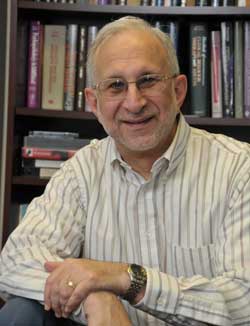New therapy targets anxiety disorder
| CONTACT: Kim Fischer <kim.fischer@temple.edu> 215-204-7479 |
| We all worry, but most of us are able to put our worries aside when we need to so that they don’t dominate our day. For some, however, such mental triaging is not possible. An estimated 5 percent of the population is not able to redirect or put their worries aside when more pressing matters call, suffering from uncontrollable and excessive worry known as Generalized Anxiety Disorder (GAD). With funding awarded by the National Institute of Mental Health, Temple’s Adult Anxiety Clinic is currently evaluating the effectiveness of a new treatment for GAD. Heimberg and his collaborators at Yale University and Kent State University contend that worry in those with GAD may be an often unintentional strategy to avoid intense emotional experience. The new 16-week, medication-free treatment helps patients increase their emotional regulation skills by taking stock of personal values and goals. |
 Kelly and Massa Photography
Heimberg
|
Patients are given weekly homework assignments, which include self-monitoring, self-observation and developing coping responses. According to Heimberg, the idea is for the clients to identify what is important to them and try to guide their actions based on their values and goals.
“Mindfulness, which refers to one’s ability to be involved in the present moment in a nonjudgemental way, is a big component of the therapy,” he said. “We guide clients to change what they do to live a more fulfilling life. Rather than making choices based on worries, we want them to make choices based on life goals and values.”
Those with GAD may worry about any number of life areas, from day-to-day responsibilities and finances to work or school to relationships and the well-being of loved ones. For some, worrying becomes confused with problem solving; for others, it is focused on a fictional future, that is, an unhappy possibility that is unlikely to come true.
Some persons with GAD, said Heimberg, report that they spend as much as 90 percent of their time worrying about matters large and small. As a result, it is often hard for them to organize themselves and, inevitably distracted, they find themselves late for important appointments. GAD can also negatively affect the quality of one’s personal relationships and work life.
The symptoms of GAD can even interfere with attempts to seek treatment. According to Heimberg, the cancellation rate for initial diagnostic interviews to begin treatment for GAD is twice that of other disorders.
“People with GAD are often too busy worrying to receive the treatment they would most benefit from,” he said.
Treating GAD presents some additional challenges. “Unfortunately, GAD has been the anxiety disorder that has been hardest to treat, and we think it is because the treatments, up until now, have not addressed the broader emotional experience of the person,” said Heimberg.
While Obsessive-Compulsive Disorder, another of six recognized anxiety disorders, dominates the media and captures our imagination in popular television series like “Monk” and “Obsessed,” GAD seems to fly under our radar. This despite the fact that it is characterized by symptoms in addition to worry — restlessness, fatigue, irritability, difficulty sleeping or concentrating, muscle tension — that most of us can relate to on some level.
GAD was not officially recognized as a disorder until 1980, and knowledge of the condition has accumulated slowly. But it is one of two primary areas of research and treatment undertaken by Temple’s Adult Anxiety Clinic — the other is Social Anxiety Disorder, the fear of being negatively judged by others.
At the Adult Anxiety Clinic, psychologists and advanced doctoral student therapists, who work under the supervision of Heimberg, serve a geographically and ethnically diverse clientele.
“The advantages of receiving treatment at a research site are many,” said Heimberg. “First of all, if you qualify for participation in a current research study, the therapy is offered free of charge. Secondly, we perform a very detailed diagnostic work up. All sessions are taped and reviewed. We watch you more closely than a private practitioner, who may have another patient in their waiting room, or a therapist at a mental health clinic, who has a huge caseload,” he said.
The experience has been transformational for Liaqat Ali, who was referred to Temple from the University of Pennsylvania where he had gone seeking treatment for what he thought was another anxiety disorder.
“Before the treatment, I could not calm down,” he said. “Now I feel like I have a whole new life.”
Dana Davis’s experience was similar.
“I was looking for treatment for my anxiety that did not involve medication,” said Davis. “The therapy gave me tools that I continue to use and the difference in my life is amazing.”
For more information about GAD treatment at Temple, call 215-204-1575 or visit the <Adult Anxiety Clinic website>.